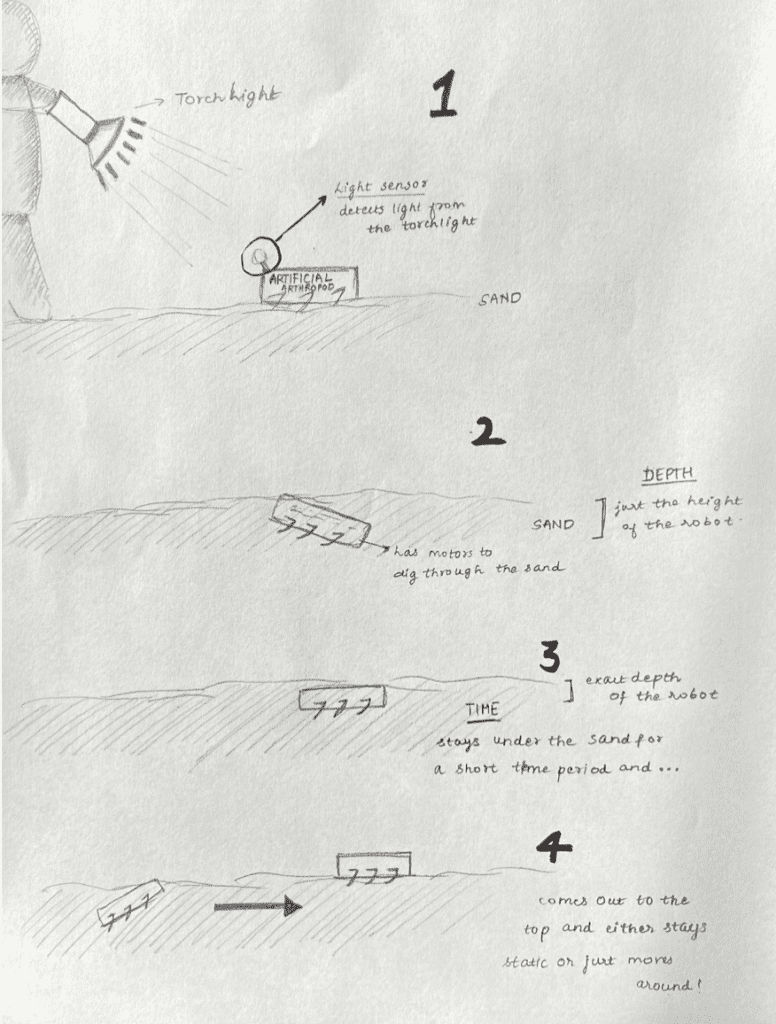Team: Amy, Armaan, Injoo, Pranav
About
Project Artificial Arthropod is a robot inspired by desert arthropods. Artificial Arthropod recognizes light stimuli and digs a burrow to hide under the sand. After a couple of seconds, the robot comes back to the surface and continues moving.
Interaction with Desert
Desert arthropods hide under the sand when encountered by different stimuli such as sound, vibration, and light. Our project focuses on the light stimulus. Without any detectable light present nearby, the robot moves forward on the surface. When the sensor on the robot detects a light above a certain intensity, it hides under the sand. After a couple of seconds, the robot comes back to the surface and continues moving forward as long as the light source is gone. If the light source is still present nearby, the digging mode is reactivated and the robot hides under the sand again.
Technical Aspects
- There will be a light sensor involved to detect the light going over a certain intensity and function as an indicator for the robot to dig a burrow.
- To enable the digging function, we would need to research the best and most suitable structures for the movement. Once we get the design in mind, we can just 3D print it.
- We will be using a servo motor to help drive the robot both forward and dig through the sand
- The sequences will be programmed on a circuit python board
- We are also considering keeping some lights on the robot itself to experiment if it can show enough luminescence so that we can see the change in color when the robot is digging under.
Why the Desert?
- Our robot’s sand-digging motion is designed for the desert context and is what makes our project unique.
- Arthropods exist everywhere in the world, yet their existence, ways of survival, and contribution to the ecosystem are often overlooked. This especially applies to arthropods in the desert, where living beings already seem nonexistent.
- In our project, we’re playing around with a very interesting fact about desert arthropods—which is that they hide beneath the sand to avoid possible danger. By focusing on this desert-specific feature of arthropods, we are able to make our robot not only unique/eye-catching but also educational, shedding light on the wonders of desert ecology.
Sketch

Click here to preview the sketch in PDF format on Google Drive (only accessible using NYU Google accounts)
These are just some initial ideas and the mechanisms are subject to change


